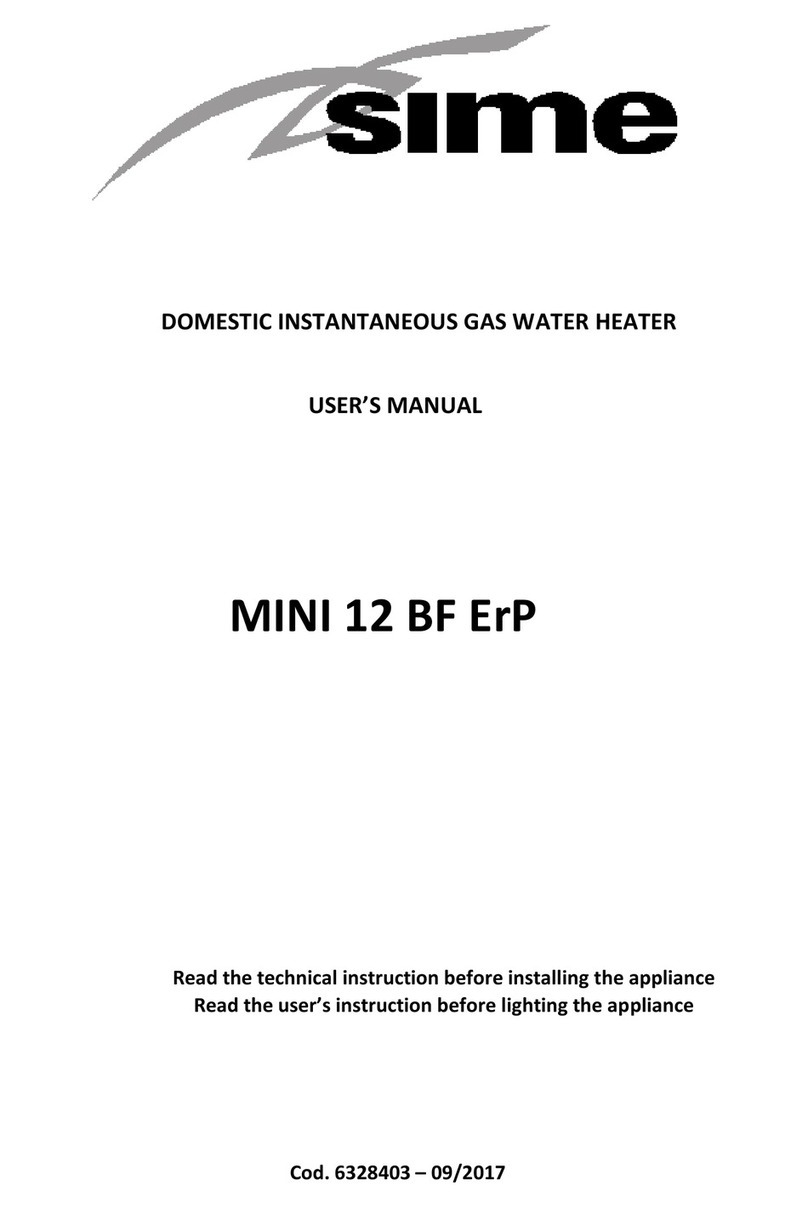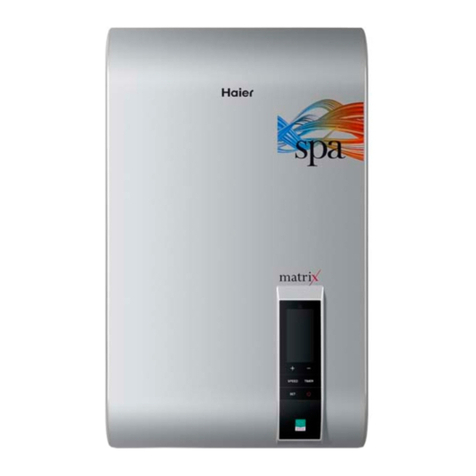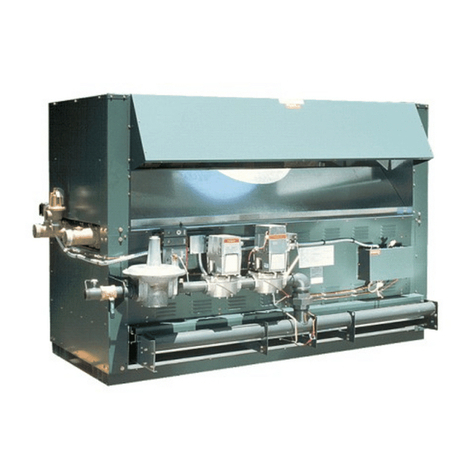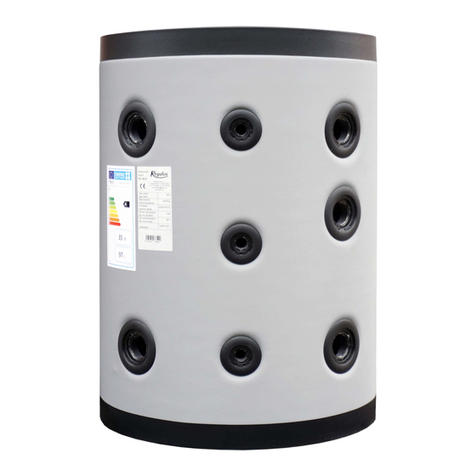DAYLIFF ULTRASUN UFS Installation instructions

Installation &
Operating Manual
ULTRASUN UFS
Flatplate Solar Systems


SPECIFICATIONS
1.
1
4.
SITING 5
INDEX
© Davis & Shirtliff Ltd 2020
Contents herein are not warranted
5.
INSTALLATION 6
6.
SYSTEM COMMISSIONING 21
7.
USAGE 21
8.
MAINTENANCE 21
9.
TROUBLE SHOOTING 22
10.
TERMS OF WARRANTY 24
3.
WARNINGS & SYMBOLS 4
2.
EQUIPMENT SPECIFICATIONS 2

1
1. SPECIFICATIONS
Ultrasun UFS Flatplate Solar hot water systems are economical effective heaters that
provide excellent performance, good value and guaranteed long life. They are of Open
Loop thermosyphon design with water flow circulating through the collector and being
stored in the tank ready for use.Features include;
• Heavy duty storage tank comprising SUS304 stainless steel inner cylinder
encased in a plastic painted insulated galvanized steel casing complete with
2.4kW electric heater, thermostat and a sacrificial anode to protect against
corrosion
• Ultra high efficiency solar collectors incorporating capillary copper pipes
ultrasonically welded on a black chrome backplate covered by high transmittance
glass
• Insulated copper pipe complete with necessary compression fittings, pressure
release valve and a drain cock
• Galvanised mounting frame
Ultrasun UFS Flatplate Systems are available in three sizes to suit domestic and small scale
institutional applications. They are effective and robust products designed for many years
of trouble free operation with a 5 year guarantee to demonstrate product quality.
OPERATING CONDITIONS
Water quality: Water outside the following limits should be appropriately pre-
treated. Clarity: Clear, TDS:<600mg/l, Hardness:<200mg/l,CaCo3
Saturation Index: >0.8
0
Max. Operating Temperature: 150 C
Max. Operating Pressure: 6bar
Congratulations on selecting a Ultrasun UFS Flatplate Solar Hot Water
System. They are manufactured to the highest standards and if installed and
operated correctly will give many years of efcient and trouble free service.
Careful reading of this Installation Manual is therefore important, though
should there be any queries they should be referred to the equipment
supplier.

2
DESIGN FEATURES
Direct Tank
1. Copper Aluminum fin absorbing plate
2. High Transmittance Glass
3. Polyester Fibre Insulation
4. EPDM Sealing Gasket
5. 6063 Aluminium Alloy Frame
Solar Collector
1
2
3
4
5
123
445
1. Steel outside casing coated by electrostatic
0
powder coating baked at 220 C to protect the
tank from outdoor conditions and UV rays
2. Direct-injected, CFC-free polyurethane foam
Insulation in 40mm thickness
3. Stainless steel hot water tank
4. UV resistant plastic cap
5. 2.4kW electric heater
2. EQUIPMENT SPECIFICATIONS
The equipment supplied comprises of two principal components, the tank and the
collectors which are mounted together on a frame. The units work on the thermosyphon
principal whereby the temperature differential between the top and bottom of the system
creates water circulation thus facilitating the heating process. A schematic layout of the
circulation arrangement is shown below:-
Priming Cock
Hot Water Out
Pressure Release Valve
Drain Plug
¾” Ball Valve
Cold Water In
¾” Non return Valve

Model
Typical Household (People)
UFS 150D UFS 200D
5 7 10
150 200 300
System Tank Size (Litres)
UFS 300D
Flat Plate Collectors
Max Heat Output/Day (kWhrs)
Collector Fluid Capacity (litres)
Min Heat Output/Day (kWhrs)
Collector Weight (kgs)
2
Collector (m )
2000
2 2.4 4
65 75 105
215 275 405
11 14.3 22.3
1000
2600
1400 2100
1170 1480 2300
32 38 64
12 15 24
7.4 9.6 14.9
A
B
C
D
E
Full Weight (kgs)
Empty Weight (kgs)
Dimensions(mm)
F
1xFCP2.0 1xFCP2.4 2xFCP2.0
520
620
3
Open-Loop (Direct) Systems
I n s u l a t e d
copper pipe
Plug
Solar CollectorSolar Collector
Security
Valve
8 Bars Hot
Water
Outlet
Open - Loop Enameled Storage Tank
One-way
Valve
Nipple
Filter
Cold Water Inlet T Nipple
SPECIFICATIONS

4
NOTE
Maximum heating output is based on average
2
irradiation levels of 6000W/m /day prevailing in
September- March and minimum Heating output is
2
basedon average irradiation levels of 4000W/m /day
prevailing in June/July and are for indicative purposes
only.
A
DE
B
3. WARNING AND SYMBOLS
The installation of the solar system must be in accordance with
the relevant requirements of the local authority building
regulations as well as regulations for the prevention of
accidents when carrying out works such as solar installation. It
is necessary to do so in a safe and professional manner, taking
due care of any aspects of the works that could result in injuries
to the person, buildings as well as general public.
Work should be preceded by a risk assessment covering all
aspects of health and safety risks, or training requirements
that are reasonably foreseen.
These instructions describe mounting and installation of
thermosiphon solar water heaters. All installations must be
done by qualified people.
Installers must adhere to the valid work protection regulations,
in particular when working on the roof. Anti-fall protection
must be employed whenever there is a risk of falling.
To avoid the risk of being burned or scalded by hot
components, Installation and replacement of collectors or
parts should be done on cloudy days. Installation work on
sunny days should be carried out only in the morning or
evening or with the collector covered.
To avoid the risk of being burned or scalded by hot solar fluid
or components, fill and flush the solar system when the
collectors are cold. The collectors should be covered while
doing so.

5
Steam can escape from the expansion relief valve of the solar
pump unit if the system is shut down. To avoid injuries an
expansion relief valve must be connected to a collecting
container with a hose line
In order to ensure a seamless operation of the product, the
safety valve should be cleaned periodically and checked for
proper functions. In areas with very calcareous water the calk
residuals on the valve should frequently be cleaned off.
The product shall be installed in an area where children cannot
access.
Immersion heater is intended as standby device for water
heating and should not be used simultaneously.
In areas with hard water hot water temperature should not
0
exceed 45 C to avoid calcification.
This product is designed for water heating purposes using
solar energy and it may not be changed or modified in any
way. It should be installed by a qualified person, who should
observe the applicable local regulations and the building
code.
4. SITING
Correct siting is critical for the effective operating of a solar water heater, the following
being important guidelines:-
• Orientate the principal axis of the units in a North/South direction, with the collector
facing the equator. This orientation is important to maximise sun exposure on the
collector as it tracks on its East /West axis throughout the day.
0
• Tilt at approx 15 . In order to optimise irradiation and also assist in the thermosyphon
process. Heater units should never be laid flat.
• Avoid any shade, especially between 10am and 4pm. Shade reduces system
efficiency.
Preferably, solar panels should be installed on roofs where solar irradiation is highest and
they are also less exposed to damage. If this is not possible, a protected ground sitting is
acceptable.

NORTH
EASTWEST
SOUTH
Hot Water OutCold
Water In
NORTH
EAST
WEST
SOUTH
Hot Water Out Cold
Water In
ORIENTATION OF SYSTEM
NORTH OF THE EQUATOR
ORIENTATION OF SYSTEM
SOUTH OF THE EQUATOR
5. INSTALLATION
Ultrasun UFS solar heaters are provided with drilled frames incorporating a support cross
bar. On roofs the preferable mounting arrangement is by means of hooks affixed to the
cross bar and secured to an appropriate mounting point on the roof beams. Suspension
from the hooks is generally sufficient and fixed location is not necessary.
For ground installation rear support legs are available which should be mounted on small
concrete feet as shown below:-
ROOF INSTALLATION
TRUSS
GROUND INSTALLATION
6
Two types of installations are available: A pitched roof installation and a flat roof
installation. The pitch roof bracket is provided for all installations while a flat roof
conversion kit is available to convert the pitched roof bracket into a stand.
Approximate weights for systems should be taken into account to ensure that roof structure
is able to bear the weight before the installation commences. The longitudinal beams
should coincide with the rafters of the roof where the structure is most rigid.

7
The units can be installed using a gravity system or pressurised supply. Pressurised systems
are preferable as they give higher line pressures up to a maximum of 3 Bar. Note that in the
case of pressurised supply hot and cold lines must be pressurised at the same pressure to
ensure even temperature control. The systems are easy to plumb being provided with two
piping connections only, the inlet and outlet. It is important to fit a non-return valve and
isolating valve on the inlet line. Suggested installation layout arrangements are shown
below:-
Cold In
Cold
Water
Supply
Hot
Water
Supply
Cold In
Cold
Water
Supply
Cold
Water
Supply
Hot
Water
Supply
Cold
In
Cold In
PUMPED SUPPLY
FROM TANK
DIRECT PUMPED SUPPLY
WITH COLD WATER STANDBY
HEADER TANK
GRAVITY SUPPLY
Hot
Water
Supply
All units are fitted with 3kW electric booster heaters which should be connected to the
mains supply via 20A fuse or MCB by a qualified electrician. Manual control is suggested
with the switch mounted in a convenient place.
3Bar solar pressure relief valve must be installed on the primary circuit (between heat
exchanger of the tank and collector) to avoid challenges with over pressure and over
temperature.
Oxidation may be seen on the galvanised parts of mounting sets if installation is very close
to the sea or humid areas.
l Open the 3 Bar relief valve on the tank.
l Unplug the endcap on the side of solar collector.
l Connect the filling hose to the bottom right of the collector.
l Raise hose above the tank and fill tank with fluid
l Close the top left collector plug when thermal fluid starts to leak out.
l Continue filling the thermal fluid until it leaks out of the 3 Bar relief valve which is an
indication it is full
l Unplug the filling hose and close the bottom right of collector.

The various installations are shown below:
Single Panel Installation
Flat roof Installation Pitch Installation
8
Pitch Roof Bracket Assembly
Step 1
Fit the top part of the solar tank bracket to channel 3 using M8 x 25 screws as shown.

9
Step 2
Select the holes in the angled section that are required for the specific installation. It is
suggested that the holes be marked according to the specific type of installation required.
Two types of angled sections are provided, a set for a single panel installation and a set for
a double panel installation. The holes required for each type of installation are shown
below:
Single Panel Angled Section
150 litres 200 litres
200 litres 150 litres
Double Panel Angled Section
300 Litres
200 Litres
300 Litres
200 Litres
Step 3
After selecting which angled section to use and which holes to mount it with, in order to fit
the required system, the top angled section can be fitted to both solar tank brackets using
M8 x 25 screws as shown below:

10
Step 4
Select which slotted holes the bottom angled section should be bolted onto. The selection
should be based on the size of the solar collectors supplied. Two sizes are available:
Ÿ2.0m² - Approximately 2000 mm in length
Ÿ2.4m² - Approximately 2000 mm in length
The correct slotted holes on longitudinal channel are indicated below:
Step 5
Fit the second appropriate angled section to the bottom of the channel on both sides as
shown below:
2
2.0m Panel 2
2.4m Panel

11
Step 6
Remove the tank feet supplied as shown below:
Step 7
Fit the tank to the completed bracket frame as shown below on both sides. This step is to
confirm that the two longitudinal channel beams are appropriately spaced to
accommodate the tank.

12
Step 8
Fit the collectors to the bracket by placing them between the angled sections as shown
below. Adjust the bottom angled section position by means of the slotted holes in order to
fit the panel/s closely. Fasten the panels through the 6mm holes by means of the M5 x 16
self drilling screws.
Step 9
Remove the collectors for installation to the roof. The completed frame should be fastened
to the roof as appropriate.
Tin Roofs
It is suggested to fasten the assembly through the longitudinal channel by means of an
appropriate fastener by earthing the roof and sealing the entry point.
Tiled Roofs
Six metals strips are supplied and can be fastened by all M8 x 25 screws as shown below:

The strips can be used to fit the system to the battens of the roof to provide additional
support. Please note that longitudinal channel should coincide with or be as closely
located to the rafters of the roof structure as possible. The strip fastening method is
depicted below in section view. Use all six fastening points to support the structure.
13
After the bracket system is securely fastened to the roof, the tank can be re-fitted. Use the
straight compression couplers to connect collectors in parallel for double panel systems
and re-fit the collectors between the angled sections and fasten with screws.
Step 10
Connect piping as shown on Fig 1. Use appropriate roof seals supplied to seal off any
pipe entry points into the roof.
Step 11
Apply pipe insulation to all exposed pipes.

14
Flat Roof Conversion
Fig 1
Assemble the structure as described for pitched roof installations up to step 5. Do not
tighten all screws initially in order to attain proper alignment of the entire structure before
final tightening.
300L HOT
WATER CYLINDER
150 OR 200L
HOT WATER
CYLINDER
Hot Water
Outlet
Vacuum
Breakers
T&P Safety
Valve
Hot Water
From
Panel
Anti-siphon Loop
T&P Safety
Outlet (Metallic)
300mm
Cold Water
From Cylinder
1978
Pressure Control Valve
Stopcock
Mains Pressure
2100
1000/1400
Single Panel Double Panel
Electrical Cover
Solar
Draincock
A

15
Step 12
Turn the structure upside down and fasten channel 2 to the top part of channel 3 using M8
x 65 screws and long spacer tubes as shown below on both sides:
Step 13
Fit the two longitudinal channels using M8 x 65 screws and long spacer tubes on both
sides as shown below:
Step 14
Fit channel 4 to channel 3 using M8 x 65 screws and long spacer tubes on both sides as
shown below:

16
Step 15
Mount channels 1, 2 and 4 together using M8 x 65 screws and long spacer tube on both
sides as shown below:
Step 16
Two types of braces are included in the kit. Short braces are used for 150 and 200 litre
installations and long braces for 300 litre installations. It should be decided at this stage of
the assembly which braces and which mounting holes should be used. This dictates the
distance between the two trusses and which hot water system will fit. It is suggested that the
braces and fitment holes be marked for the specific installation required.
The various layouts for the different braces are shown below:
150 Litre
Tank

200 Litre Tank
300 Litre Tank
Step 17
Fit the brace ends using M8 x 25 screws on both sides as shown below:
Step 18
Fasten the braces' centre holes using M8 x 25 screws and short spacer tube as shown
below:
17
This manual suits for next models
3
Popular Water Heater manuals by other brands
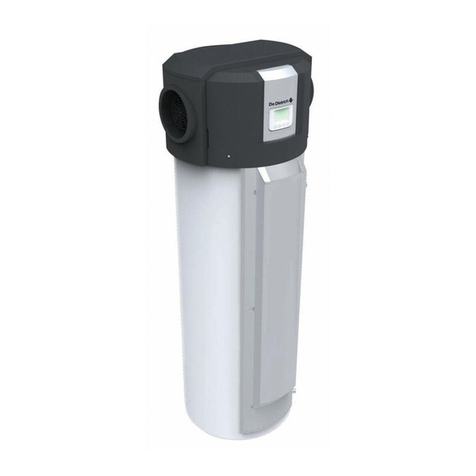
DeDietrich
DeDietrich Kaliko TWH 300EH Installation and service manual

STIEBEL ELTRON
STIEBEL ELTRON SBS 800 W Operation and installation
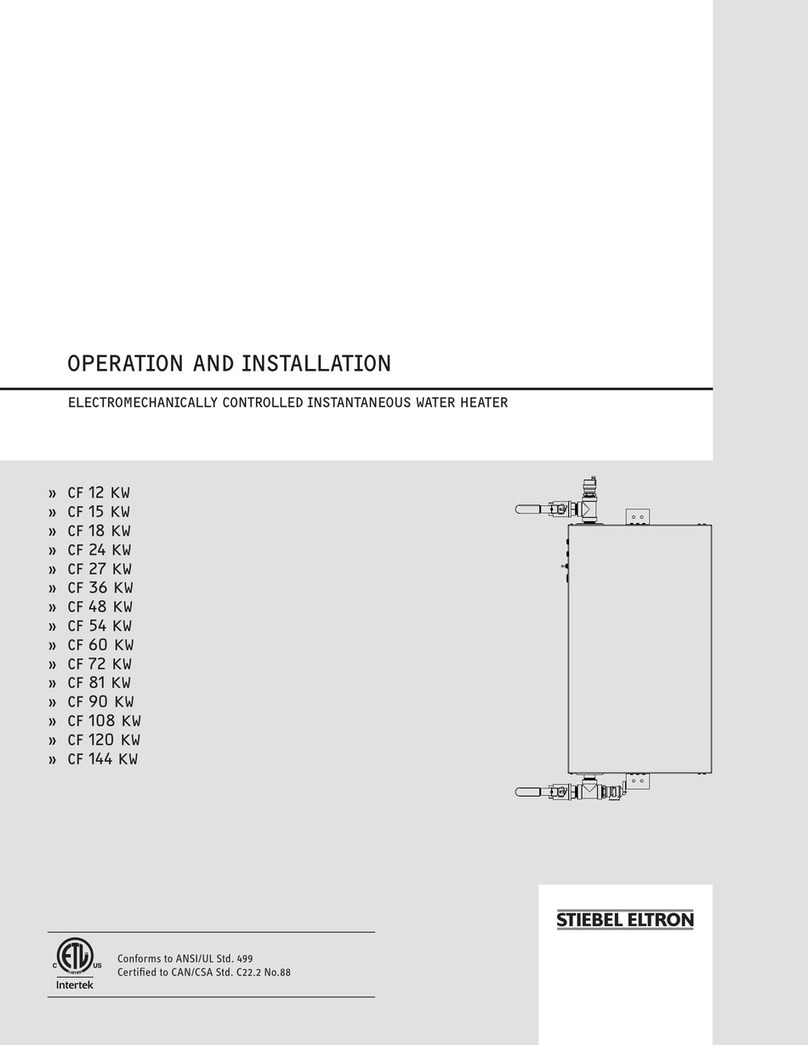
STIEBEL ELTRON
STIEBEL ELTRON CF 12 KW Operation and installation
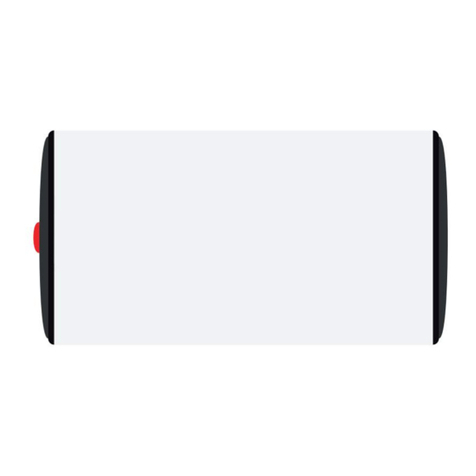
ATL
ATL SWH 15H M5 instruction manual
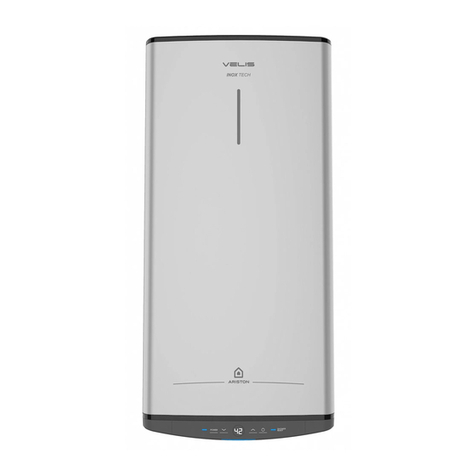
Ariston
Ariston ABSE VLS PRO PW 100 quick start

Galmet
Galmet SGW(S) Maxi 250 Installation and operating manual
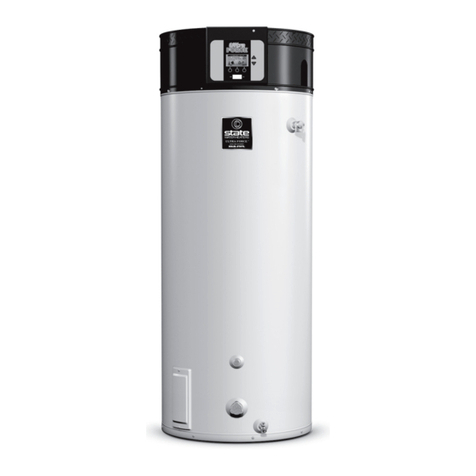
State Water Heaters
State Water Heaters SUF-100-250 instruction manual

Celsior
Celsior 35 BF Installation and operating instructions
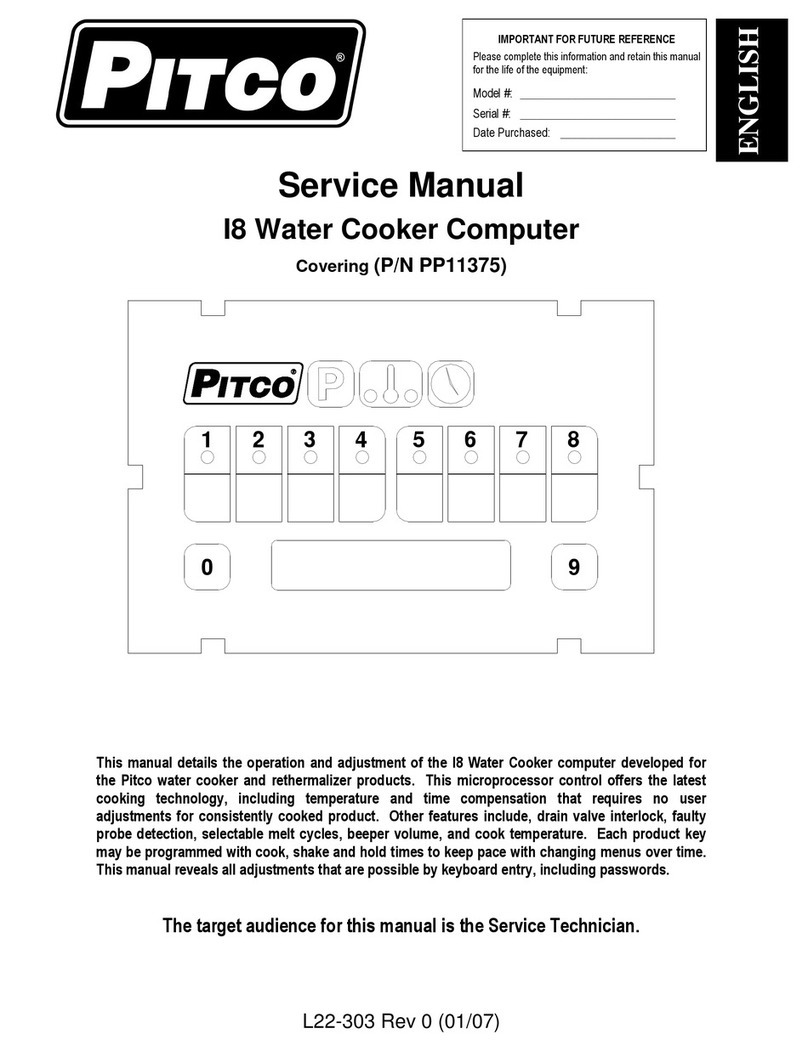
Pitco
Pitco L22-303 Service manual

Ariston Thermo
Ariston Thermo SGA X 120 EE Installation and maintenance instructions
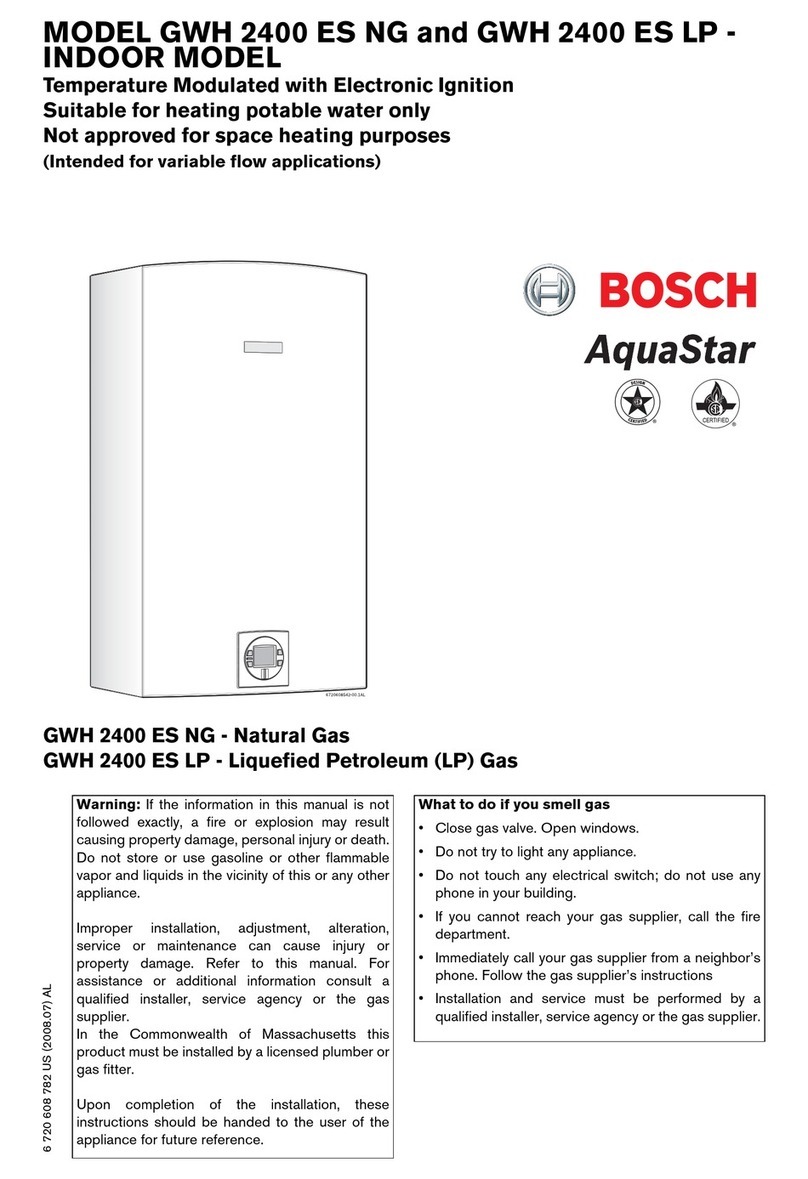
Bosch
Bosch GWH 2400 ES NG manual
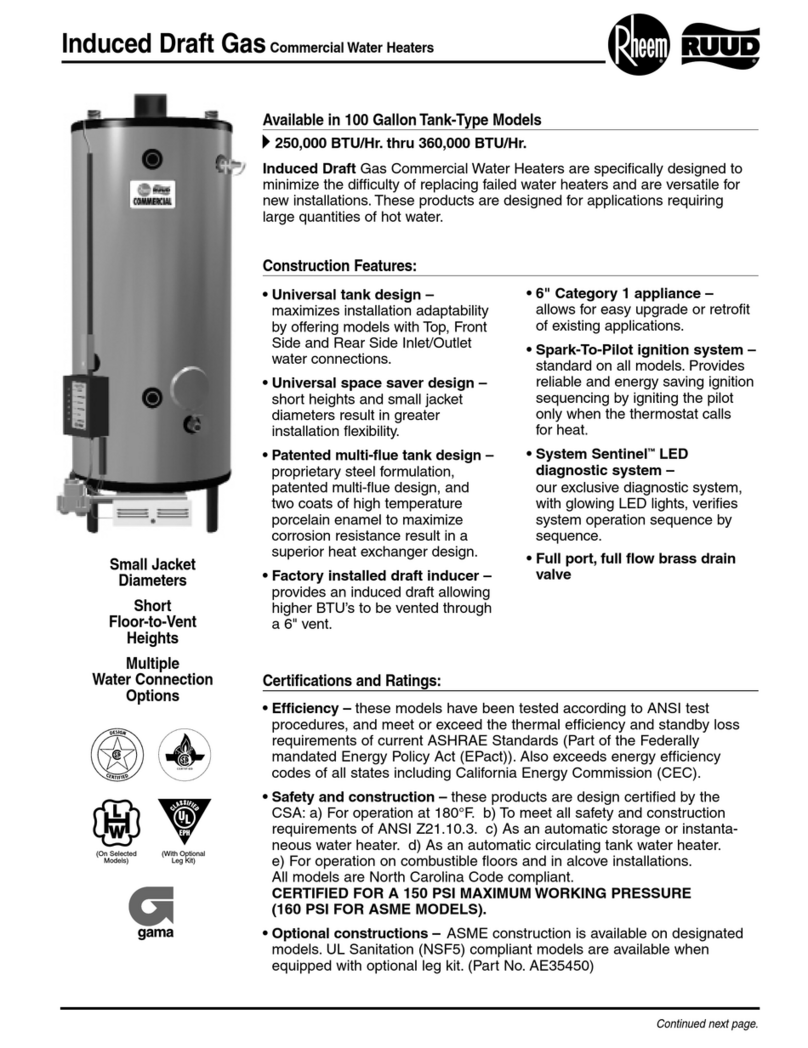
Rheem
Rheem Induced Draft Specifications
